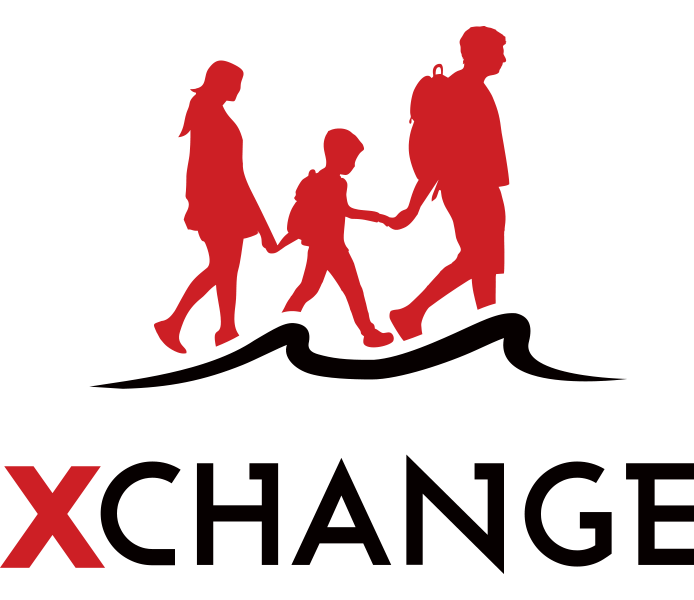The recently released IPCC report provides the world a stark warning, once again, that unless there are immediate large-scale reductions in greenhouse gas emissions, we will exceed the 1.5C global temperature increase – with dire consequences. Climate change may become the defining crisis of our time and disaster displacement will likely become one of its most prevalent consequences.
In understanding how climate change factors influence migration, it is imperative to first recognise how contextually specific the outcomes of climate change are. Climate events can be categorised into fast and slow onset events, while they are not necessarily mutually exclusive, such events present different challenges. Fast-onset events include floods, droughts, heat waves and storms and often cause rapid and mass displacement, whereas slow-onset events are gradual changes to climate patterns, including increased temperatures or rainfall variation, sea-level rise, desertification and land/forest degradation. While there have been vast predictions about the impacts of climate change worldwide, their accuracy is limited. Many scientific models assume such changes will progress without major tipping points or thresholds which tip the climate system all together – such events would be unforeseen and difficult to mitigate as climate change impacts will likely amplify and exacerbate one another. Current estimates of the number of people who will be forcibly displaced due to climate change range from 50 to 200 million, yet these estimates hugely rely on data that is marred by uncertainty as the size of impending crisis will directly depend on humanity’s actions.
The impacts of climate change in terms of migration and humanitarian needs are vast, extreme climate events can both trigger displacement and also worsen living conditions – preventing people from returning home. Hazards which result from such extreme weather events, including prolonged droughts, are already causing an average of over 20 million people to become internally displaced each year. Individuals who are already internally displaced, seeking asylum or stateless due to reasons including conflict and persecution, often reside in climate change ‘hotspots’ where they are then exposed to secondary displacement and hardship. Thus, climate change acts as an amplifier, both creating new stresses on society and intensifying already existing challenges.
Climate change affects everyone, but the impacts will be felt unequally. If we look to countries like Yemen, the impacts of environmental degradation have already amplified entrenched socio-economic issues due to ongoing conflict in the region. But just how deeply has climate change affected the lives of the Yemeni people?
According to the UN, if an area’s water supply drops below 1,700m³ per person per year, the population faces water stress. In 2021, Yemenis had 140m³ water per person per year. As of 2015, that number had dropped to 86m³. This depletion in water supply has prompted an agricultural collapse and caused a huge rise in cholera and malaria, which has already intensified Yemen’s humanitarian needs and malnutrition crisis. The current outbreak of cholera, which peaked in 2017, is considered the fastest-growing Cholera outbreak ever recorded and by the end of 2020, there had been 2.5 million suspected cases and ¼ of all deaths had been children under the age of 5yrs. Such outbreaks are characterised by unsanitary conditions, water scarcity, and a lack of health infrastructure, and without lasting peace in sight, the country continues to be impacted by such conditions, alongside economic freefall and the collapse of public services and livelihoods support.
The current civil war in Yemen, which started in 2015, has already generated the world’s worst humanitarian crisis. However, climate change is not a faraway prospect, severe climate events which were historically ‘once in a century’ are now very frequent, including the two major cyclones in 2015 and 2018 and flooding in 2020 which have compounded to further accelerate environmental degradation in the region. Around 24 million people require humanitarian assistance in Yemen, which is nearly 85% of the country’s population. While the effects of climate change are not the main predictors of conflict, they can be ‘threat multipliers’ as evidenced in Yemen. Furthermore, while those living in conflict zones are often among the most vulnerable to climate change as environmental degradation has already come into effect, there is a real lack of funding for climate action in fragile states. It is imperative that climate finance is allocated to communities impacted by conflict so that they may also adapt to and mitigate future environmental hazards.
In terms of migratory frameworks, last year, the UN Refugee Agency (UNHCR) ruled that people who flee the effects of climate change and natural disasters should not be returned to their country of origin if their essential human rights would be at risk on return. The ruling recognises that sudden-onset events and slow-onset processes can trigger cross-border movement of individuals in need of protection from life-threatening risks. The Committee refers to the need for united national and international efforts to avoid exposure of individuals to violations of their rights due to the impacts of climate change, which represents the most pressing challenge of our time. Such a ruling makes it unlawful for countries to deport people in this way, setting a global precedent to consider asylum claims in line with climate threats in terms of non-refoulement obligations. However, there is no overarching definition of who constitutes a ‘climate refugee,’ largely because the impacts that climate change can have are so multifaceted when applied in different contexts. The 1951 refugee convention does not recognise environmental factors as a criteria to define a refugee, yet, there are increasingly prevalent lobbying campaigns for international and regional protections to be implemented by nations.
Without far-reaching and united climate adaption and mitigation efforts, humanitarian assistance is and will remain simply a bandage on an ever-growing wound. We must endeavour to improve our understanding of the relationship between migration, climate change and environmental degradation so that we can strengthen global protection mechanisms and move away from restrictive border policies.



